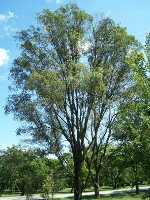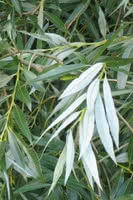Mon-Fri 9am - 5pm Mountain time
Siberian Elm vs Silver Leaf Willow
Ulmus pumila
Salix alba var. sericea
PRODUCTION CANCELLED
NOT AVAILABLE THIS SEASON - MIGHT RETURN
Siberian Elm is a small to medium-sized deciduous tree. It has a similar form to American Elm, but smaller, with a more pyramidal habit and shorter lifespan. It is also more resistant to Dutch Elm disease and is very salt tolerant.
Siberian Elm was grown as shelterbelts in the prairies after the Dustbowl disasters, where its rapid growth and tolerance for drought and cold initially made it a great success. It is an excellent shade tree.
Note: Due to it's increasingly controversial reputation for being invasive in warmer climates, we are no longer planning to grow this species for retail purchase on a regular basis.
Silver Leaf Willow has orangish bark and long, silvery grey leaves. Bees and other insects are attracted to its flowers.
Popular as an ornamental tree for parks, it is also used as a shelterbelt species. It may not be as cold hardy as some of the other willow varieties, however.
Siberian Elm Quick Facts
Silver Leaf Willow Quick Facts
In row spacing: 2.4 - 3 m (8 - 10 ft)

